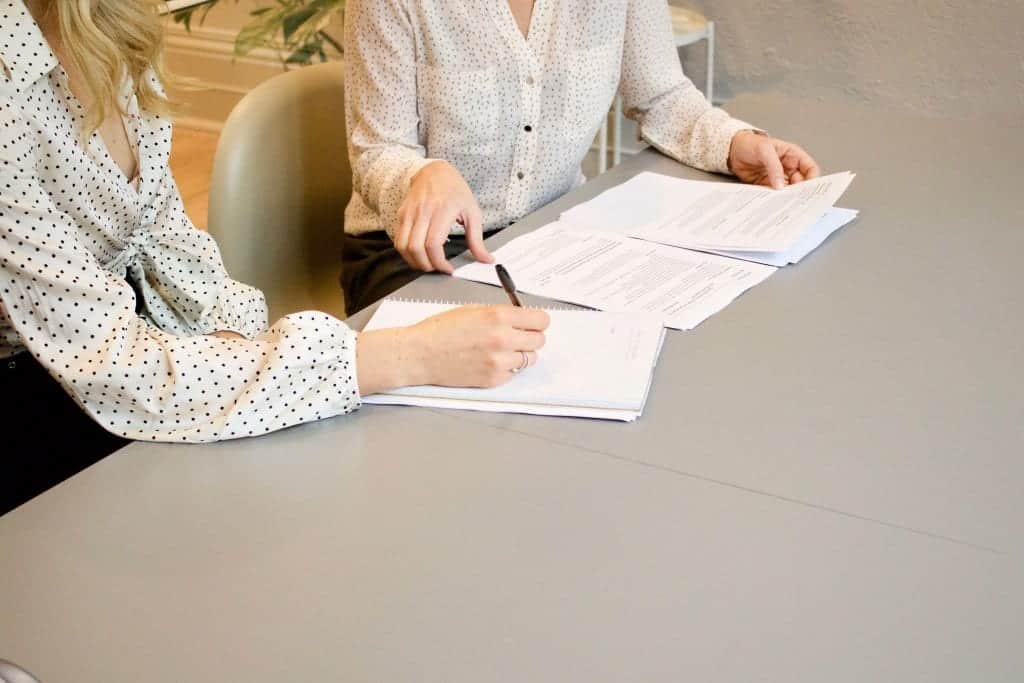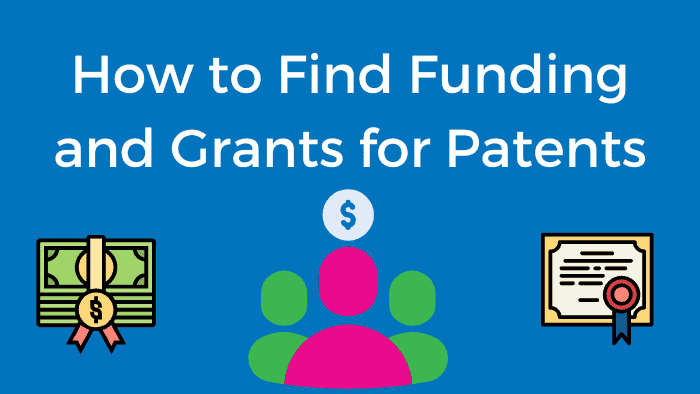Grants for patents are for individuals that need capital to fully develop their invention.
Securing grants for patents can be quite a fulfilling experience, but it can also be quite challenging. There’s a lot of paperwork, red tape, waiting time, and mandatory SOPs that you’ll have to go through if you want to legally own your product—and eventually profit from its production.
Thankfully, there are plenty of inventor resources nowadays that are specifically designed to help people secure patents. They do this through:
- Education—informing/educating inventors on what patents to secure, where they can secure them, the general process of securing patents, etc.
- Referrals—referring the inventor to organizations or institutions that they have partnered with that can help them secure a patent and/or secure funding for the patent
- Finances—organizations or institutions that provide grants for promising inventions, consequently funding the patent, the product production, or both
Some companies may only offer one of the three services. Others could provide all three. Point is, it’s much easier for inventors to legally claim rights to their creative ideas and benefit from them now than it was ten, maybe twenty years ago.
In this article, we’re going to focus on the third type of help: the finances. Securing a patent isn’t easy, and covering the patent cost isn’t either. It’s not uncommon for inventors to seek help funding patents or finding grants for patents. And, as we mentioned earlier, there are organizations and institutions set up for exactly this reason.
We’ll cover some of the more popular and effective steps you can take to securing finances that could, potentially, secure your patent.
But first, a quick definition:
What is a Patent?
A patent provides legal protection to an inventor, granting them the necessary time and space to test, manufacture, and eventually sell their invention without risk or threat of competition. It gives the inventor the right to prevent other inventors from potentially building, selling, and earning off of the same invention for a specified amount of time.
As you can guess, it’s imperative that an inventor secures a patent as soon as possible if they wish to mass-produce and profit from their idea legally. Overview of the Patent Process
In order to secure a patent, you need to go through a couple stages:
- Outline your invention/development process (as detailed as possible)
- Create/design/manufacture a prototype, and then test it
- Ensure your invention qualifies for patent protection (something you can ask a patent attorney to help with)
- Assess your invention’s commercial potential (will it sell?)
- Prepare to file a USPTO (United States Patent Trademark Office) Patent Application
Each stage is broken down into several sub-sections, and some ideas—especially the more complex ones—may require additional stages in between. But as far as straightforward outlines go, this is the patent process preparation you’d have to go through in a nutshell.
How Much Does a Patent Cost?
Strictly speaking, the answer to this (even if it seems like such a cop-out) is, “it depends.” When working with a patent attorney, you can pay anywhere from $750 for a simple idea to upwards of $40,000 for a more complex one. You might end up paying less if you opt to secure a patent without a lawyer (because then you’d take out legal fees and such), but chances are you’ll end up spending more.
Why?
Because over 90% of patent applications are rejected at least once, and you’re required to pay full price for all resubmission attempts.
Working with a patent attorney may seem more expensive upfront, but your chances of approval are greatly improved. In fact, having someone who knows the process and can legally guide you to optimize your submission practically guarantees you’ll only pay for the patent process once.
According to the small business website under the Houston Chronicle, inventors should seek funds in the range of $100,000 to $2M to cover all bases (patent process, production, marketing, etc.). How would one go about securing such generous sums?
Helpful Links:
- Blog Article: How to Patent an Idea
- Blog Article: How to File a Provisional Patent Application
Option 1: SBIR Financial Request Submission

One way to go about securing funds or grants for patents is by submitting a request for funding to the Small Business Innovation Research office. They have a U.S. Government program intended to help small businesses with their R&D (Research and Development) and offer financial aid in the form of contracts or grants.
This option works best for inventors who own, co-own, or manage any small, for-profit business that is at least 51% owned by a U.S. citizen or permanent resident. The business should also have less than 500 employees to qualify. The SBIR office covers 12 federal agencies. Their funding max values range from $150,000 for preliminary phases and up to $1M for subsequent phases.
Helpful Links:
Option 2: Apply for Fiscal Sponsorship

Fiscal Sponsorship is described as a “formal arrangement” in which a project is sponsored by a registered 501(c)(3) public charity. This formal arrangement has some incredibly helpful benefits, most important of which is the ability to solicit donations (tax-deductible) and financial aid under your sponsor’s status.
However, due to the nature of such an arrangement, a fiscal sponsorship is quite rare and difficult to secure in terms of funding patents. What’s more, having a licensed attorney with experience in nonprofit legal matters is mandatory for such a sponsorship to take place.
Helpful Links:
Option 3: Appeal to Social Enterprise Foundations

Social enterprise—also known as social entrepreneurship—is a category for inventions that have a strong social mission. Nonprofit institutions and organizations, civic-minded individuals, and for-profit businesses that yield social returns typically fall under this category.
Because of their nature, there are a number of foundations that provide PRIs, or program-related investments, to organizations or causes that are considered social enterprises. These are low-interest loans that are given to project owners or inventors whose social mission is in line with the foundation’s mission and/or interests.
Helpful Links:
Option 4: Apply for Federal Funding

If the USPTO’s SBIR program doesn’t work for you, you can still turn to the government for support. The U.S. government has active support programs for funding grants for patents of inventors whose ideas, concepts, and/or initiatives line up with different U.S. government departments. These programs are meant to assist with the R&D work that goes with the initiatives, and they can grant up to several million dollars in funds.
Applying for grants for patents through federal funding is often highly sought after because the funds can be repaid at a much later date.
Helpful Links:
- Patent Pro Bono Program
- Blog Article: How to Write a Patent Application
Option 5: Find & Present to Angel Investors

“Angel Investors,” contrary to some misinformed assumptions, is not the name of a global company. It’s actually a term used to refer to investors who typically decide to sponsor a patentable invention or innovation in the form of a donation. Amounts range from $20,000 to $100,000, depending on the investor and the invention he/she chooses to fund.
This is actually a business tactic for them. Angel investors fully expect financial recompense in the form of ownership (usually a small percentage) of the new company or innovation. However, they are rarely ever hands-on with the company, choosing instead to passively earn from their investment. Some angel investors may connect you with their network, should they perceive it to be beneficial to their investment.
Helpful Links:
Option 6: Try Crowdfunding

“Crowdfunding” is a relatively new concept that only came around (and is, arguably, only possible) thanks to the internet. Crowdfunding, as the name suggests, is the process of amassing funds for an invention or venture through small donations from lots of people. Inventors can leverage the curiosity and generosity of millions of people to potentially fund their idea.
And because the internet has made it easier to find 100 people willing to donate $50 each—as opposed to finding one person willing to donate $5,000—crowdfunding is, in fact, a viable and proven source of financial assistance.
There are dozens of websites today that make it easy for anyone to set up their own crowdfunding campaign. Some worth noting: Kickstarter, GoFundMe, Patreon, and Causes.
Helpful Links:
Option 7: Find Venture Capitalists

Venture capitalists are similar to angel investors in the sense that they invest in inventions or innovations that they feel have a lot of potential. The biggest difference is that venture capitalist firms always sponsor complex, high-level inventions. Their investments start upwards of a million dollars. And, like angel investors, they expect to be repaid via ownership of the startup. Biggest difference? They’re often given more than just a “small percentage.”
Helpful Links:
Conclusion
To recap here is what we covered:
Table of Contents
- What is a Patent?
- How Much Does a Patent Cost?
- Option 1: SBIR Financial Request Submission
- Option 2: Apply for Fiscal Sponsorship
- Option 3: Appeal to Social Enterprise Foundations
- Option 4: Apply for Federal Funding
- Option 5: Find & Present to Angel Investors
- Option 6: Try Crowdfunding
- Option 7: Find Venture Capitalists
At the end of the day, there are a lot more than just seven options for funding patents or securing grants for patents. Plenty of inventors often leverage their own network or ingenuity to secure grants, donations, or financial aid to support their idea. It’s all a matter of knowing where to look and who to approach. What’s important is that you do secure your patent, as there are numerous advantages to legally claiming what’s intellectually yours.
So what are you waiting for? Book a free consultation today!

